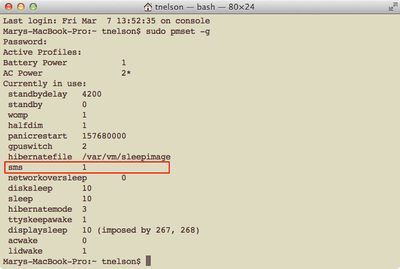If you want to erase the drive on a Mac before installing Yosemite, or start over at any time, you can use a dedicated installer drive to boot that Mac, erase its drive, and then install the OS. Download PortableOSX for free. PortableOSX installs a full or stripped down version of Mac OS X to a mobile device, such an USB2 or FireWire drive. The resulting OS X installation can be bootable by both Intel and (recent) PPC Macs. Jun 25, 2020 If you want to make use of your Mac's Thunderbolt port, then this is the best external hard drive for Macs. It provides twice the speeds of standard USB 3.0 drives. Terminal will erase all the data inside the drive and create the bootable USB drive. If there is a need to install a different version of the operating system then the user just has to replace the above-underlined command with their desired version of OS. For example, if the user wants to install Mac OS Sierra instead of Mojave then they would. Mar 12, 2020 Make sure that it has at least 12GB of available storage and is formatted as Mac OS Extended. Open Terminal, which is in the Utilities folder of your Applications folder. Type or paste one of the following commands in Terminal. I like to use three native utilities all in one go, just to be thorough and get all the details. In: diskutil list; df -Hl; echo; mount out: /dev/disk0 (internal, physical): #: TYPE NAME SIZE IDENTIFIER 0: GUIDpartitionscheme.500.3 GB disk0 1: EFI EFI 209.7 MB disk0s1 2: AppleHFS Macintosh HD 499.4 GB disk0s2 3: AppleBoot Recovery HD 650.0 MB disk0s3.
Most users use Disk Utility to erase a disk or hard drive. But some Mac users might need to erase them from the command line on Mac OS. To do that, the only thing you need is a bit of precise syntax to make sure that you are erasing the proper disk.

Here I'll show you how you can erase and format a disk using the command line.
Working with Terminal
Start off by running the following command in the command line: Diskutil list
This is going to list all the mounted drives on your Mac.

Once you have found the proper drive to erase, just copy its identifier so you can use it for the next command. Then pick a name and a system format type. This is the syntax we need: Diskutil eraseDisk FILESYSTEM DISKNAME DISKIDENTIFIER
Let’s say the disk I want to erase has “/dev/disk5s2” as its identifier and I’m going to use Mac OS Extended Journaled (JHFS+) as the system format type and name it “Empty”. The syntax is going to look like this: Diskutil eraseDisk JHFS+ Empty /dev/disk5s2
Portable Os Usb
It’s important to keep in mind that if you run the eraseDisk command, the target disk is going to lose all its data, so make sure you are erasing the proper disk.
Install Mac Os On External Drive
If you need different system format types, here are a few references you could use instead of JHFS+:
Best Portable Os
- Mac OS Extended: HFS+
- MS-DOS fat32: FAT32
- ExFAT: ExFAT